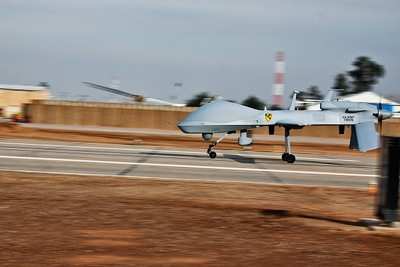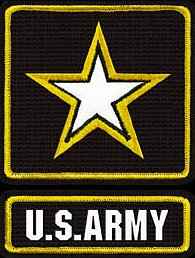Thu, Sep 09, 2010
Integration, Testing Of Hellfire Missile Aboard The Grey Eagle
UAS A 'Great Success'
Army unmanned aircraft systems officials said success was so
great with the integration and testing of the Hellfire missile
aboard the Grey Eagle UAS that the Army would begin deployment of
four weaponized systems to Afghanistan in the fall. In a Pentagon
bloggers roundtable August 25, Col. Greg Gonzalez, program manager
for Army UAS said in recent user tests at the National Training
Center, Soldiers had fired eight live fires with eight hits.

Of the eight, six aimed by the on-board laser designator were
fired directly from the Grey Eagle platform resulting in six hits.
The remaining two test fires were Hellfires launched from AH-64
Apaches which were also direct hits. "Prior to that we had also
tested the Hellfire integration at China Lake back in the fall of
2009," he said. "At that time, we had nine out of 10 hits and the
tenth one that we did miss was an extremely difficult shot of a
target moving directly below the aircraft, moving in a parallel...
a perpendicular shot."
Tim Owings, deputy program manager for Army UAS said the Army
had been testing sense-and-avoid capabilities of its UAS, such as
software variants, new capabilities, training operators, but until
recently the service hadn't been able to fly at night in national
airspace per Federal Aviation Administration restrictions. Those
restrictions have since been lifted and will help resolve the
problem that the majority of flight hours that all services are
flying today are in theater, operating with impunity. Once war
efforts die down and most of the assets are returned to the U.S.,
training will still be needed said Gonzalez.

Addressing the future of UAS, Col. Robert Sova, capability
manager for UAS, said the role of the systems in war has exceeded a
million hours and that the "work horse" of the UAS reconnaissance
inventory, the Shadow, had exceeded 500,000 hours of flight time
alone. He added the Army continues to see an increase in flying
hours. He said primary roles will still be surveillance, security,
command and control, and communications relay. He also said he
doesn't see an expansion of attack roles for the present other than
Grey Eagle but didn't close the door on the feasibility of using
smaller, lighter weapon systems in the future along with studying
the possibility of cargo UAS.
More News
Terminal Radar Service Area Airspace surrounding designated airports wherein ATC provides radar vectoring, sequencing, and separation on a full-time basis for all IFR and participa>[...]
Aero Linx: Utah Back Country Pilots Association (UBCP) Through the sharing experiences, the UBCP has built upon a foundation of safe operating practices in some of the most challen>[...]
From 2010 (YouTube Edition): Imagine... Be The Change... Inspire FROM 2010: One of the more unusual phone calls I have ever received occurred a few years ago... from Anousheh Ansar>[...]
(Pilot) Felt A Shudder And Heard The Engine Sounding Differently, Followed By The Engine Chip Detector Light On April 14, 2025, about 1800 Pacific daylight time, a Bell 206B, N1667>[...]
Also: AMA Names Tyler Dobbs, More Falcon 9 Ops, Firefly Launch Unsuccessful, Autonomous F-16s The Air Force has begun ground testing a future uncrewed jet design in a milestone tow>[...]
 ANN's Daily Aero-Term (05.07.25): Terminal Radar Service Area
ANN's Daily Aero-Term (05.07.25): Terminal Radar Service Area ANN's Daily Aero-Linx (05.07.25)
ANN's Daily Aero-Linx (05.07.25) Classic Aero-TV: Anousheh Ansari -- The Woman Behind The Prize
Classic Aero-TV: Anousheh Ansari -- The Woman Behind The Prize NTSB Prelim: Bell 206B
NTSB Prelim: Bell 206B Airborne-NextGen 05.06.25: AF Uncrewed Fighters, Drones v Planes, Joby Crew Test
Airborne-NextGen 05.06.25: AF Uncrewed Fighters, Drones v Planes, Joby Crew Test




